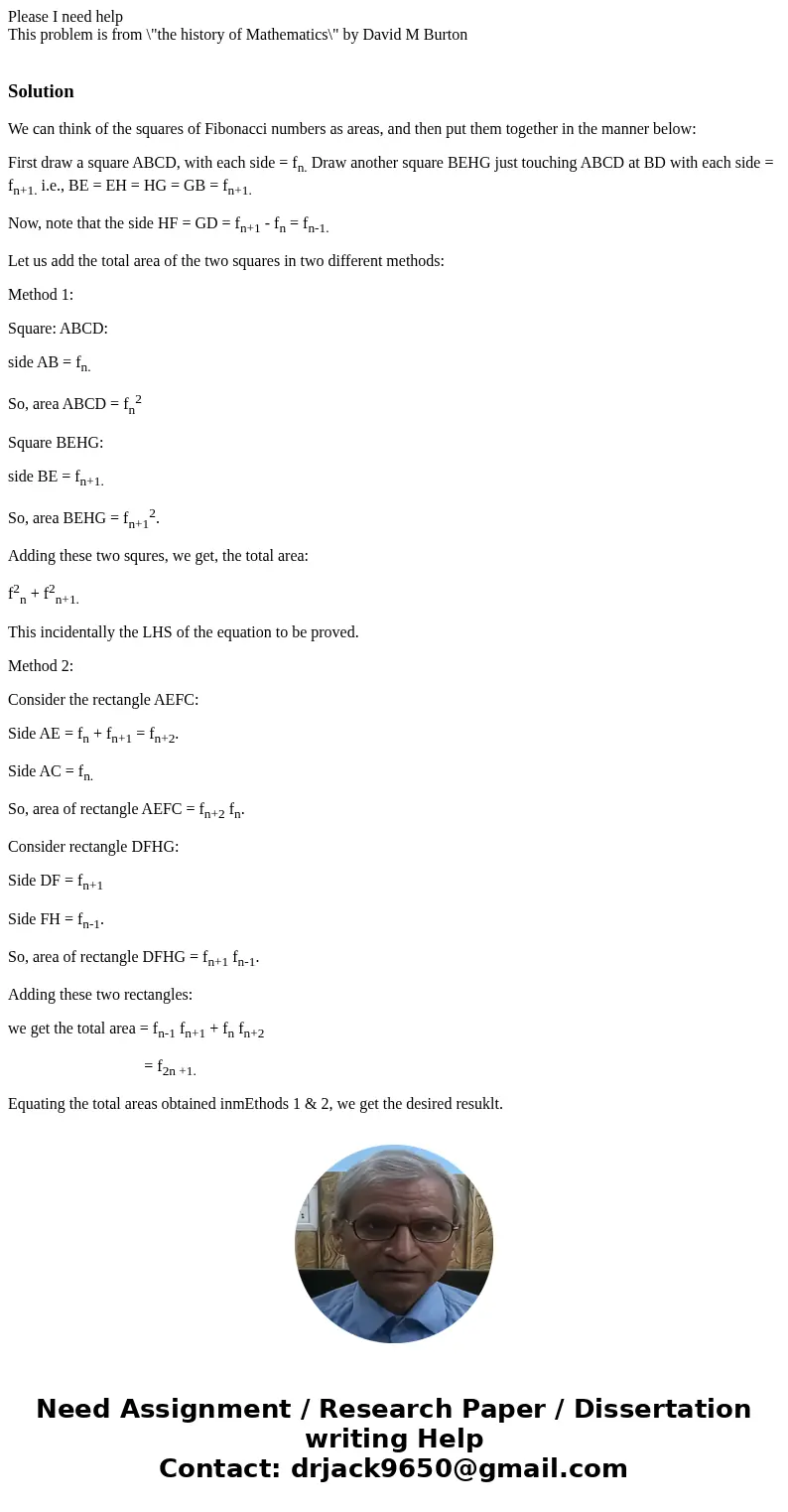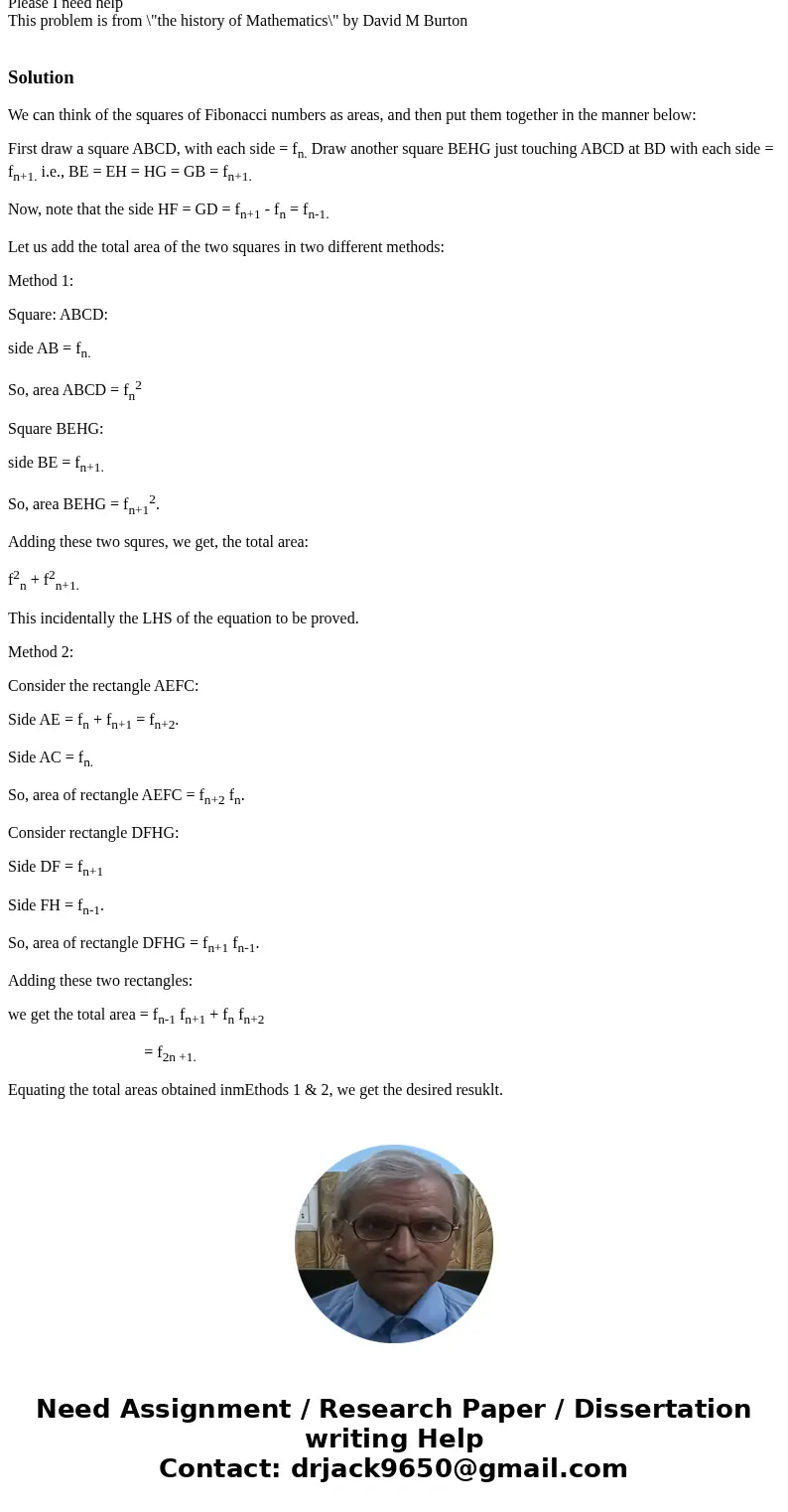Please I need help This problem is from the history of Mathe
Solution
We can think of the squares of Fibonacci numbers as areas, and then put them together in the manner below:
First draw a square ABCD, with each side = fn. Draw another square BEHG just touching ABCD at BD with each side = fn+1. i.e., BE = EH = HG = GB = fn+1.
Now, note that the side HF = GD = fn+1 - fn = fn-1.
Let us add the total area of the two squares in two different methods:
Method 1:
Square: ABCD:
side AB = fn.
So, area ABCD = fn2
Square BEHG:
side BE = fn+1.
So, area BEHG = fn+12.
Adding these two squres, we get, the total area:
f2n + f2n+1.
This incidentally the LHS of the equation to be proved.
Method 2:
Consider the rectangle AEFC:
Side AE = fn + fn+1 = fn+2.
Side AC = fn.
So, area of rectangle AEFC = fn+2 fn.
Consider rectangle DFHG:
Side DF = fn+1
Side FH = fn-1.
So, area of rectangle DFHG = fn+1 fn-1.
Adding these two rectangles:
we get the total area = fn-1 fn+1 + fn fn+2
= f2n +1.
Equating the total areas obtained inmEthods 1 & 2, we get the desired resuklt.


 Homework Sourse
Homework Sourse